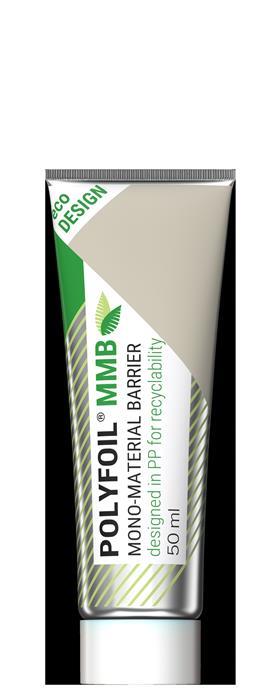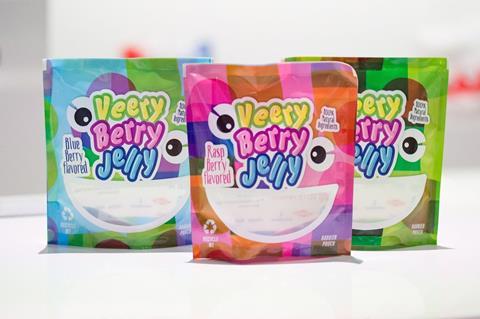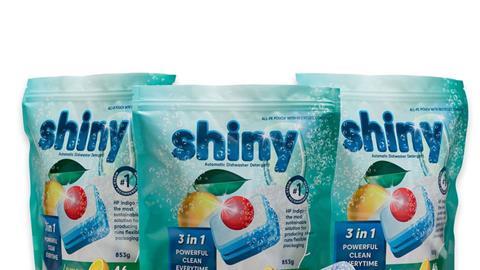Recyclability is one of the cornerstones of a circular economy and has shifted into focus not least due to a proliferation of EPR (Extended Producer Responsibility) schemes, the EU’s green deal and changing laws that penalise packaging that’s not recyclable or reusable and doesn’t incorporate recycled content.
In recent years, the industry has made some strides toward making packaging materials more easily recyclable. We’ve seen progress across materials ranging from flexibles to paper packaging, and a big impact can be made already at the design stage. Elisabeth Skoda reports.
Recycling volumes from Germany’s dual system have increased by 8.4% in 2020, Central Agency Packaging Register has announced, and minimum standards for determining the recyclability of packaging have inspired various innovations.
“Marketing has discovered ecological packaging. Looking at recycling-friendly mono-material packaging that also saves material, the minimum standard has made an impact. If it’s a material composite that is tricky to recycle that only looks environmentally friendly because it’s brown, it is a dead-end when it comes to the circular economy,” explained Gunda Rachut, Chair of the ZSVR, at the organisation’s annual press conference with the German Environment Agency.
Keeping it simple with corrugated
Consumers often regard paper-based packaging as more sustainable, but recycling can be challenging, especially when it comes to composite materials. To address this, the European Federation of Corrugated Board Manufacturers (FEFCO) released its Corrugated Packaging Recyclability Guidelines in the autumn of 2021, aimed at optimising recyclability via design parameters for paper and board packaging.
For example, the FEFCO guidelines identify the addition of plastic to corrugated packaging as having a negative impact on reprocessing and companies’ economic margins. FEFCO says that the industry would prefer to avoid all plastics, even biodegradable varieties. It provides the design metric of keeping plastic content to 5% of pack weight as a maximum, with a 3% weight content being the preferred amount.
Similarly, in its recyclability guidelines, CEPI recommends only using as many non-paper constituents as are necessary to fulfil the expected functions of the packaging. If non-paper constituents are needed for the intended use, the separation of the different elements should be as easy as possible. Plastic lamination layers should not readily degenerate or break into very small pieces in the pulping stage.
Of course, paper and board and corrugated as well as rigid plastics such as PET have made great strides to be recyclable. It’s in the area of flexible and semi-rigid packaging that the most work needed to be done.
Plastic challenges
Tubes have traditionally been challenging to recycle, but in recent years, we have seen some interesting developments moving this forward. Hoffmann Neopac has recently been granted RecyClass approval for its Polyfoil® MMB mono-material barrier tube.

Peter Bossert, Head of Material Development for Hoffmann Neopac, points out the importance of understanding the entire value chain to design innovative and sustainable products that are also competitive.
“Factors include the function of the packaging, barrier properties, compatibilities with aggressive bulks, consumer convenience, design for recycling, carbon footprint, safety such as child resistance, price, design for reuse or repair, reduction of complexity. Sustainable packaging has become far more complex than mere materials agnosticism – and that’s something Neopac took to heart when developing its Polyfoil MMB solution. “
A tube designed for recycling
To create a fully recyclable tube, it was important to understand existing recycling streams, how a tube gets sorted and whether it would end up in an HDPE rigid stream or a PP rigid stream.
“We developed Polyfoil MMB according to RecyClass design guidelines: Melt flow index, density, PE/PP content over 95%, ash content (mainly TiO2 level from white colouring) minimalistic artwork with EuPIA (European Association of Printing Ink Manufacturers) conform nontoxic low migration printing inks and sandwiched metallization to still enable correct PE/PP NIR sorting into the corresponding recycling stream. We also incorporated MDO PE (mono-directional-oriented PE foil) technology to ensure barrier performance against water vapour and oxygen, while still being HDPE based and not compromising on HDPE threshold,” explains Mr Bossert.
Challenges to be addressed
Creating a recyclable tube closure came with its own set of challenges, as did making the tube itself. As the tubes get sorted into the HDPE/PP rigid bottle stream, low MFI (melt flow index) materials had to be used wherever possible during compression/injection moulding for producing the tube shoulder or closure – places where higher MFI ranges are typically used.
“The cap had to be composed of the same material as the tube (HDPE/PP). PE closures are more sensitive to stress cracking than PP. Considering this, an informed choice was made to design a new line of HDPE closures,” adds Mr Bossert.
Normally, aluminium foil provides barrier properties in the tube, and a foil range provides metallic optics.
“We used metalized MDO (Machine Direction Orientation) foil technology to get the required barrier properties and the metallic optics without using aluminium, which would hamper recyclability.”
With the structural loss of the aluminium foil in combination with weight reduction concepts, a shift to maximise the threshold of stiff HDPE grades was needed to enable compare able haptics of the tube.
“With a double barrier concept, we ensure protection to valuable packed goods, but also slowed down migration from inside out, which has multiple benefits, like long shelf life, low weight loss and reliable concentration of the API, protection of the adhesive interfaces which is beneficial for bulk compatibility and increased robustness of the structure,” says Mr Bossert.
Successful design for recycling for flexibles
Flexible packaging is the workhorse of the packaging industry. According to figures from CEFLEX, flexible packaging packs more than 40% of food products in Europe while using 10% of all consumer packaging materials. Recycling rates are growing but clearly lag behind rigid plastics.
Romain Cazenave, Packaging EMEA Marketing Director at Dow, states PET bottles as an example of plastic packaging with a high recycling rate.
“PET bottles are a mono-material product, which means waste quality is well-defined. Flexible packaging, on the other hand, is popular due to its efficiency, enabling the packing and promoting of large quantities of product with little material. For the same reason, it’s also the cheapest.”
To achieve the optimum flexible material, different polymers are combined, such as polyester for the optics, stiffness and heat resistance, polyamide for toughness and polyethylene for sealing.

“This has lowered costs and the carbon footprint of production. But the challenge was, how can we maintain all these properties and add recyclability?” asks Mr Cazenave.
Dow worked with partners to develop resins that are fit for purpose, tweaking machine design and polymers to achieve the desired properties, while not losing sight of the carbon footprint.
“Previously, for flexibles, the winning ticket was the lower cost. But today the carbon footprint & recyclability are where the focus lies. So, we want to keep the efficiency of flexibles in terms of CO2 both in terms of cost and the circular economy.”
He is optimistic that innovation will cause an acceleration of the adoption of these new technologies.
“In 2022 we will reach a different scale of recyclability and the use of recycled content. We’re working with CEFLEX and other organisations to make sure that everybody adopts the same development rules so that flexible packaging waste becomes an attractive material and there are more incentives to sort and recycle it. The better you can monitor the quality of the waste, the less challenging it is to recycle. We are aiming to reduce the spectrum of our waste to make it more valuable.”
From pouch to pouch
Dow Packaging and Specialty Plastics, in collaboration with HP Indigo, Reifenhäuser, Cadel Deinking and Karlville have recently announced the successful delivery of their first pouch-to-pouch mechanical recycling concept.
“The first PE-rich pouch was designed for recyclability with up to 5% EVOH in the total structure for barrier functionality, and Dow’s resins provided a remarkable stiffness-toughness balance, low-temperature sealability, adhesion to extruded barrier layers and excellent bubble stability for the second PE-based pouch we used a high-performing solventless adhesive to enable the lamination of the MDO-PE film to the PE-film containing recycled resins from the first pouch. We also wanted to make sure that the material could run on the machines at the same speed, and we achieved that,” explains Mr Cazenave.
Collaboration is key
Collaboration across the value chain is important, from polymer design all the way to collection, sorting, and recycling.
“Many companies were involved in this project, which was a challenge, but the collaboration was excellent. It wasn’t enough to prove that the pouch was theoretically recyclable, we needed to prove that it could be recycled and made into a useful application, and we achieved that.”
Mr Cazenave explains that for this project, the new resin was co-extruded on a Reifenhäuser EVO 9-layer blown film line.
“The project showed that it was possible to both produce recyclable packaging according to Recyclass and CEFLEX guidelines and use recycled materials in high-value applications through collaboration across the value chain.”
Scope for growth
Mr Cazenave foresees fast developments and adoptions in the coming years.
“I’ve seen the industry moving at a pace I’ve never seen in 20 years, so I’m optimistic that we are moving in the right direction. Of course, there are still some economical hurdles to overcome, and we’re fighting against an extremely optimised solution. After all, polyester technology has been optimized for 30 years. The new technology is not yet at this level of optimisation, but it will come, and will grow fast.”
He concludes that legislation is set to be a major driver behind this growth.
“For example, in the EU, 100% of packaging needs to be reusable or recyclable by 2030. Major brands have already committed to doing so by 2025. There is also a healthy tax incentive to make plastics recyclable. Investment in new lines is growing. Some time is needed to adapt, but as the design and production of packaging develop, and sorting technology becomes more advanced, investment increases significantly. It’s important for flexible packaging to get closer to rigid packaging in terms of sorting and recycling rate, and we’re moving in that direction.”


















No comments yet